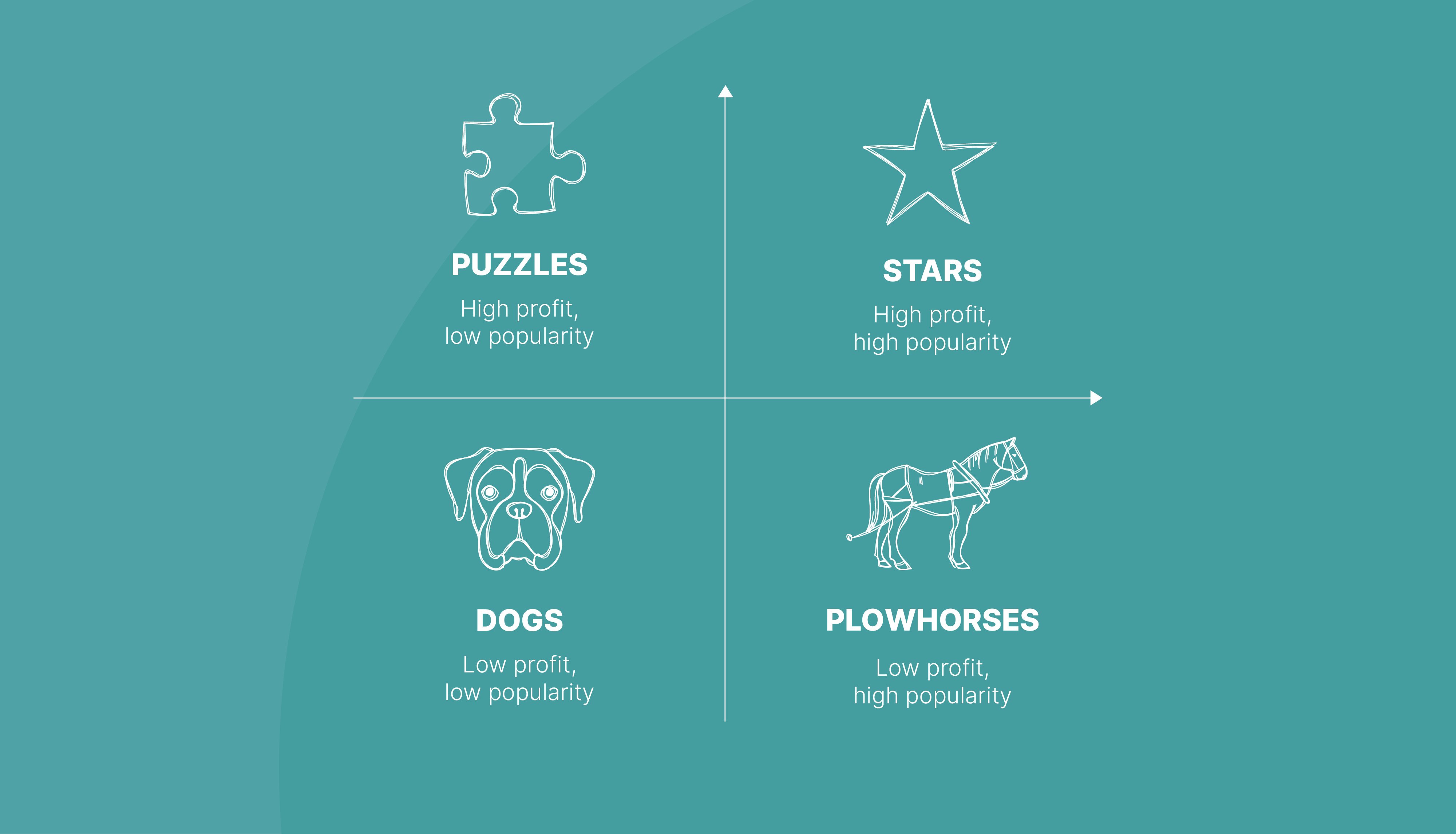Get our best tips how to design and organize your menu to maximize profitability while maintaining customer satisfaction. It’s called menu engineering!
We know that restaurants often struggle with their profit margins on food, due to high food costs and prices affected by factors such as seasonality, supply chain disruptions, and global market fluctuations.
Analyze your current menu
Start your menu engineering by analyzing your current menu: Evaluate each menu item based on its profitability (contribution margin) and popularity (sales volume). This will help you categorize your dishes into four groups:
- Stars (high profit, high popularity)
- Plowhorses (low profit, high popularity)
- Puzzles (high profit, low popularity)
- Dogs (low profit, low popularity).
* Menu engineering concept is introduced by Donald D. Smith and Michael L. Kasavana, in the 1980s.

Optimize your menu offerings
Stars: Keep these items prominent on your menu, as they generate both high sales and high profits.
Plowhorses: Consider adjusting portions, ingredients, or prices to increase the profitability of these popular items.
Puzzles: Promote these dishes more effectively by highlighting them on your menu or through server recommendations. You may also consider re-evaluating their presentation, portion size, or pricing to increase their popularity.
Dogs: Remove or replace these items with new, potentially more profitable dishes, or reengineer them to improve their appeal and profitability.
The menu design
- Place high-profit items in prime locations on the menu, such as the top right corner, where customers tend to look first.
- Use boxes, borders, or other design elements to draw attention to profitable items.
- Limit the number of choices in each category to avoid overwhelming customers and focus on promoting your most profitable dishes.
- Use descriptive language, storytelling, or enticing adjectives to make dishes sound more appealing and justify higher prices.
How to present the menu price
- Remove currency symbols and decimal points to reduce the focus on cost.
- Use price bundling or prix fixe options to encourage customers to spend more by perceiving a better overall value.
- Experiment with value perception by offering a range of prices within each category.
Continuously monitor and adjust your restaurant menu
Regularly track the performance of your menu items and make data-driven decisions to fine-tune your offerings, pricing, and menu design. Adjust your menu seasonally or based on changing market conditions and customer preferences.
Cost control
Review your ingredient costs and supplier relationships to negotiate better deals or consider alternative sources. Optimize portion sizes and minimize waste to further control food costs.
Smart tools to help you keep control of your food cost
We at Trivec have a large partner ecosystem with tailormade integrations for restaurants, which help you streamline your restaurant. We have integrations to system which help you keep control of your purchases and your inventory, to better keep control of your food cost.
Download our guide “The future of restaurant service” and get more smart tips on how to run a successful restaurant 2023.


 English
English Svenska
Svenska Norsk bokmål
Norsk bokmål Français
Français België – NL
België – NL